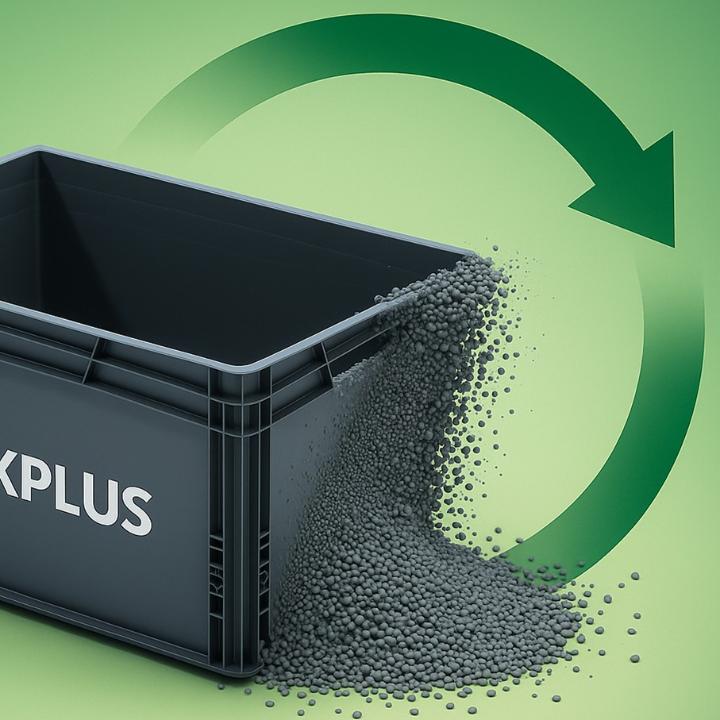
Give your old crate a new life – Return it to Boxplus!
What happens to old crates?
The life cycle of plastic packaging
Everyone knows them: the sturdy plastic crates from Boxplus used to transport, store, or display products. They may seem indestructible, but even these crates eventually reach the end of their useful life. So what happens then? Are they simply thrown away, or do they get a second life? In this article, we’ll guide you through the life cycle of plastic packaging – from production to reuse..
1. The birth of a crate
It all starts with raw materials: plastic crates are often made from recycled plastic or virgin materials like polypropylene (PP) or high-density polyethylene (HDPE). Through injection molding, these materials are turned into strong, functional crates that last for years. They are designed for heavy-duty use in sectors like logistics, agriculture, pharmaceuticals, food, retail, and industry..
2. Long live the crate
Plastic crates are built to last. They can be used for many years, even in tough conditions. Thanks to their durability, stackability, and easy cleaning, they are a popular choice for circular logistics. Many companies even opt for crate pooling – where crates circulate between companies – to reduce waste and increase efficiency.
3. The end? Or a new beginning?
At some point, crates become worn out, damaged, or no longer meet quality standards. But that doesn’t mean their story ends in a landfill. On the contrary – old plastic crates are often collected and recycled.
Here’s how that works:
- • Sorting and cleaning: Worn crates are collected, sorted by plastic type, and thoroughly cleaned..
- • Shredding: The crates are shredded into plastic granules – small pellets that can be reused as raw materials.
- • Reproduction: These granules are used to create new crates or other plastic products. This keeps the material in circulation.
4. A circular system
More and more companies are switching to circular packaging solutions. Plastic crates are ideal for this purpose: they are reusable, easily traceable (via RFID or barcodes), and fully recyclable at the end of their lifespan. This results in less waste, reduced use of virgin materials, and lower CO₂ emissions..
5. What can you do?
As a company, you can help build this circular chain::
- • Choose reusable packaging over single-use plastic.
- • Return your old crates to Boxplus..
- • Ask about the origin of your crates – are they made from recycled materials?
Conclusion: crates with a future
An old plastic crate is not waste – it’s a resource for something new. By making smart packaging choices, we take meaningful steps toward a more sustainable, circular economy. So next time you see an “old crate,” remember: it might just be on its way to a second life.
#Boxplus #BoxplusRecycling #BoxplusCircular #PlasticCrates #Packaging
#Logistics #ReusablePackaging #IndustrialPackaging #ReverseLogistics